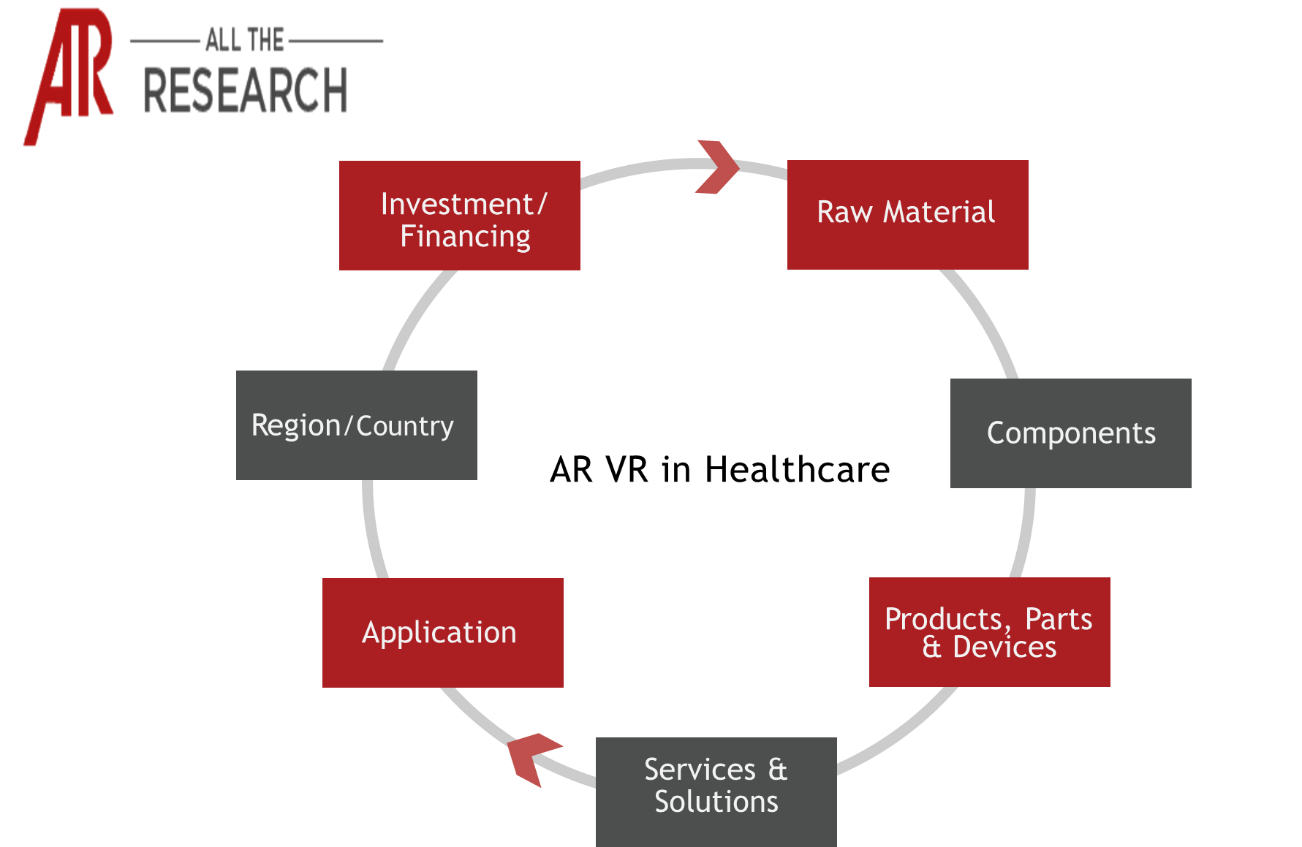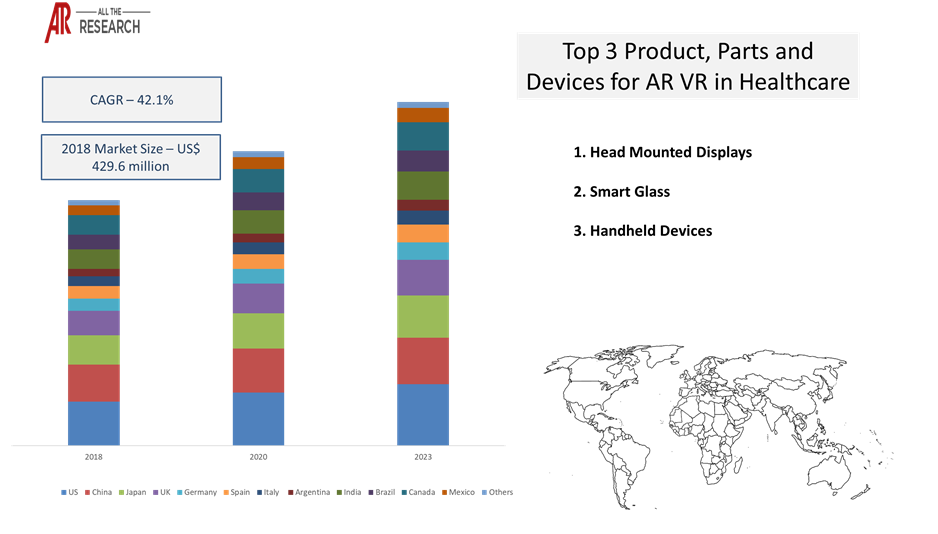The ever-growing healthcare industry is currently at the cusp of a revolution due to the introduction and integration of various technologies such as AI, IoT, and AR VR, among others. The AR VR in healthcare market ecosystem is particularly bringing about changes in the functioning of doctors and also in the treatment patterns. The AR VR in healthcare ecosystem is expected to grow at a CAGR of around 42.1%. The growth of AR VR in healthcare market is mainly driven by the increasing penetration of connected devices in healthcare and increasing investments in AR VR for healthcare.
The growing need for cutting-edge technology for the development of novel diagnostics and treatment is driving the need for the integration of AR VR in Healthcare market. Bringing down costs is one of the most important concerns for healthcare providers and payers worldwide, which is driving the adoption of AR VR in Healthcare.
In the last few years, there has been an increase in investments in AR VR companies with a focus on the healthcare sector. For instance, Syncthink, a company that has developed a fully integrated VR device for eye-tracking called EYE-SYNC, raised around US$ 3.5 million in Series A funding in January 2018. Another company Meridian raised US$ 2.5 million seed funding in December 2017. The company has a mobile application called AR+. The application allows clinicians to deploy medical content through video, audio, 3D imagery, and training.

| Raw Material | Components | Products, Parts, and Devices | Services & Solutions | Application |
| Silicon | Sensors | Head-Up Displays | Documentation | 3D modeling/ design |
| GaN | Camera | Head-Mounted Displays | Visualization | Training |
| Glass | IMU | Smart Glass | 3D Modelling | Others |
| SiC | Processor | Handheld Devices | Navigation | |
| Metals | Modules | Workflow Optimization | ||
| Others | Graphics (Cards) | Others | ||
| Audio (ICs) | ||||
| Memory | ||||
| Display | ||||
| Others |
The AR VR in Healthcare market was valued at US$ 429.6 million in 2018 and is expected to reach US$ 2,547.6 million by the year 2023, growing at a CAGR of 42.1%. The growth of AR VR in Healthcare ecosystem is mainly driven by increasing investments and the growing need for advanced technologies to improve diagnosis and treatment outcomes and reduce healthcare costs.
One of the most important areas that will be impacted by the integration of AR is surgeries. There has been an increase in the number of minimally invasive surgeries being performed. Minimally invasive surgeries, however, require the surgeons to rely on imaging data which is mostly in 2D format. This may sometimes lead to errors. However, with the use of augmented reality, it is possible to provide surgeons with a better 3D view of the inside and outside of a patient, which can help improve surgical outcomes significantly.
According to a recent report published in the SPINE journal, the use of AR technology demonstrated an accuracy rate of around 85% in pedicle screw placement as compared to 64% with the free-hand technique. Philips healthcare is one of the leading players that is increasingly investing in this technology.
In February 2019, Philips Healthcare unveiled a new mixed reality concept, which is based on its Azurion image-guided therapy platform and Microsoft’s HoloLens 2 holographic computing platform. This platform brings together live imaging and vital data and llllllllllconverts it to a 3D holographic AR environment that helps surgeons in improving outcomes of the surgery.

There are many trends that are having an impact on the market forecast. These, when evaluated from a company’s perspective, can drive growth. Our numerous consulting projects have generated sizeable synergies across all regions and all sizes of companies.
| Company | Ecosystem Positioning | Total Revenue-2018 | Industry | Region |
| Products, Parts, and Devices | US$ 136.81 bn | AR VR | Global | |
| Products, Parts, and Devices | US$ 55.83 bn | AR VR | Global | |
| Microsoft Corporation | Products, Parts, and Devices | US$ 110.36 bn | AR VR | Global |
| Samsung Electronics Co. Ltd | Products, Parts, and Devices | US$ 221.6 bn | AR VR | Global |
| HTC Corporation | Products, Parts, and Devices | US$ 0.73 bn | AR VR | Global |
Very few markets have interconnectivity with other markets like AR VR. Our Interconnectivity module focuses on the key nodes of heterogeneous markets in detail. Artificial Intelligence, the Internet of Things, 3D printing, and Medical Imaging markets are some of our key researched markets.

| Trends | Application | Impact |
| Surgeons are increasingly using augmented reality and virtual reality for surgical training, education and planning. The 3D replica of patients’ scans are made that allow them to collaborate and study surgical tactics with their team. | 3D modeling/ design | 0.97% |
| Virtual reality and augmented reality are used for training nursing students by providing them a virtual training center with realistic medical equipment and patients. | Training | 2.54% |
| Augmented reality and virtual reality technologies are used to help people with less eye sight issues. The glasses are mounted on their eyes that help them feel the surrounding things. | 3D modeling / design | 1.12% |

Ask for free product review call with the author

Share your specific research requirements for a customized report

Request for due diligence and consumer centric studies

Request for study updates, segment specific and country level reports
